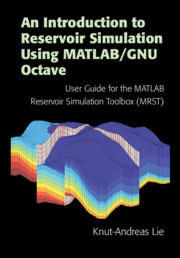 An Introduction to Reservoir Simulation Using MATLAB/GNU Octave
An Introduction to Reservoir Simulation Using MATLAB/GNU Octave from Part I - Geological Models and Grids
Published online by Cambridge University Press: 22 July 2019
The chapter starts by explaining how petroleum reservoirs are formed and gives a brief introduction to various concepts from geology to non-geologists. Next, we discuss the continuum hypothesis and how flow through subsurface porous media is modeled on different spatial scales. An essential part is to develop a description of petrophysical properties like porosity and permeability. We explain how this is achieved in MRST, and outline a few examples of models that give realistic representations of reservoir rocks. This includes the popular SPE10 benchmark and a model of a shallow-marine formation.
To save this book to your Kindle, first ensure [email protected] is added to your Approved Personal Document E-mail List under your Personal Document Settings on the Manage Your Content and Devices page of your Amazon account. Then enter the ‘name’ part of your Kindle email address below. Find out more about saving to your Kindle.
Note you can select to save to either the @free.kindle.com or @kindle.com variations. ‘@free.kindle.com’ emails are free but can only be saved to your device when it is connected to wi-fi. ‘@kindle.com’ emails can be delivered even when you are not connected to wi-fi, but note that service fees apply.
Find out more about the Kindle Personal Document Service.
To save content items to your account, please confirm that you agree to abide by our usage policies. If this is the first time you use this feature, you will be asked to authorise Cambridge Core to connect with your account. Find out more about saving content to Dropbox.
To save content items to your account, please confirm that you agree to abide by our usage policies. If this is the first time you use this feature, you will be asked to authorise Cambridge Core to connect with your account. Find out more about saving content to Google Drive.